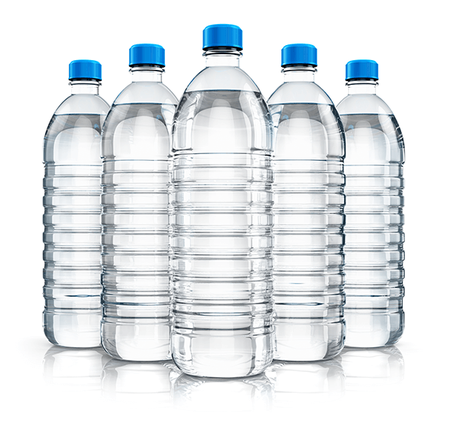The learning curve to allow Manteca to have “clean” recyclables so items the city collects under new rules for what you can put in the blue cart will be repurposed instead of buried will require paying attention to details.
Among the examples are plastic bottles that water, soda, sports drinks and juices are sold in. Most are California Redemption Value (CRV) containers worth a nickel each and are either No. 1 or No. 2 plastic. They are good to go in the blue carts providing you remove the caps. While the bottles are primarily No. 1 plastic the caps are No. 5 plastic and are essentially garbage.
The importance of getting the blue cart right is critical. The city needs to demonstrate to vendors what they collect has close to zero contamination before they will resume accepting them. If not recycling loads city solid waste trucks collect will go to landfills where it will cost the city $52 a ton to bury them with an average of 600 tons being landfilled a month.
Manteca needs to stop collecting items that no longer have value in the blue carts or else what they collect will all have to be buried. Current city solid waste rates do not reflect landfill costs. Before tougher processing rules went into place worldwide the city didn’t have to pay vendors to unload what it collected. The annual cost of landfilling what is collected in blue carts could force an annual jump in solid waste fees of up to $15 if none of the items can be recycled. That’s based on per household cost for the landfill tipping fees for what the city collects from blue carts.
“The city doesn’t recycle,” City of Manteca Solid Waste Supervisor Jeremy Kline said during a presentation Thursday to the Manteca Rotary Club at Ernie’s Rendezvous Room.
Kline noted cities across the nation are facing the same recycling dilemma that Manteca is now dealing with. Many nearby jurisdictions that contract their collection services out will be faced with significant jumps in per household rates when contracts come up for annual review. Because Manteca does its own collection it has the ability to either avoid rate increases tied to new recycling conditions or to keep any rate hike needed as low as possible if they can successfully educate residents to put only certain items in blue carts.
Kline cited several examples of what has happened across the nation including the City of Stamford. Last year the Connecticut city received $70,000 for recyclables they collected. This year they have paid $900,000 to have their recyclables buried as they — just like in Manteca and elsewhere — no longer meet tougher non-contamination requirements.
The other items OK to place in the blue carts are clean corrugated cardboard and tin cans. Those tin cans, though, need to have their labels removed and be washed out.
Kline noted the city is exploring other initiatives such as shredding all organics into fertilizer when combined with green waste including paper that now has to go in the brown garbage carts as well as food waste.
There are two big roadblocks. The State of California takes up to three years to review a permit for such operations once they are proposed. And shredding and composting must take place inside due to the San Joaquin Valley’s stringent air quality standards. Kline noted that would require a considerable investment given that the equipment and such would need to he housed in a building.
Under the new rules that went in to effect this month Paperboard such as cereal boxes, all paper including magazines and newspapers, plastic bags, plastics that aren’t No. 1 or No. 2, glass containers, and Styrofoam currently have no recycling value and must be placed in brown carts.
There is a two-month grace period — December and January — where residents will be allowed to work on changing their recycling habits. Only warnings will be issued at some point during the two months.
Then in February county conservation corps workers will go ahead of collection trucks on pick up days to inspect the contents of blue carts. Those with any of the wrong items will be tagged and not picked up. If it happens a second time, the city will seize the blue cart.
The city anticipated a number of households may have to switch to larger brown carts.
If the City Council concurs on a second reading of an ordinance on Dec. 18, the $51.78 change out fee to switch carts will be suspended for at least 90 days.
As of last week, there were already 500 people signed up for larger brown carts at the solid waste office on Wetmore Street or the finance office at the Civic Center.





